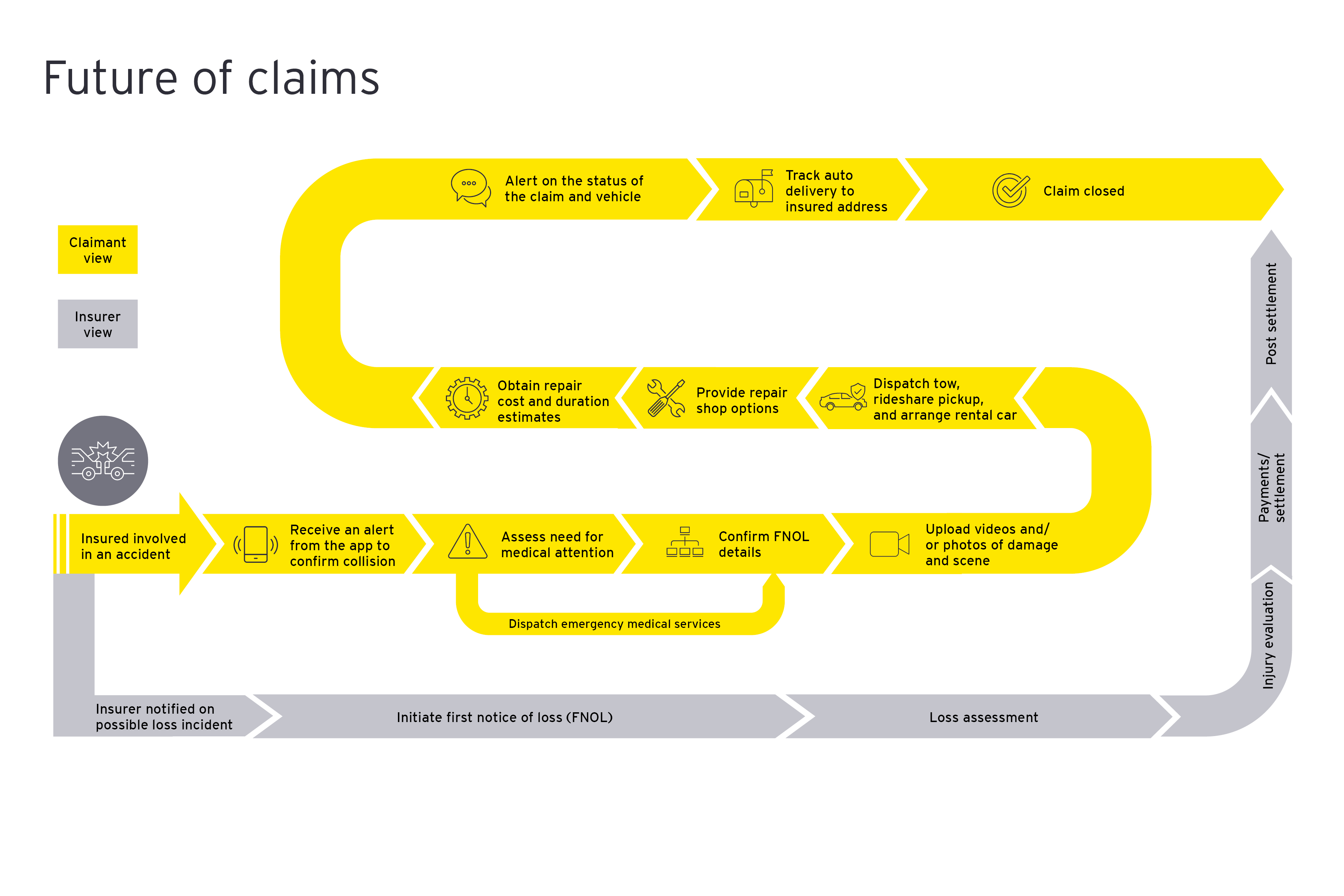For quite a few years, claims leaders in insurance have been rightfully focused on automating as many steps of the claims management process as possible. The modernization of claims platforms and the deployment of chatbots, document ingestion tools and artificial intelligence (AI) for data extraction during the last several years has helped some insurers improve productivity and indemnity performance in some lines of business, while also reducing costs.
However, many insurers have experienced suboptimal returns on their initial investments in automation. In some cases, pilot programs could not be scaled. In others, advanced tech has only been applied to certain workflows (e.g., the use of chatbots or document portals within the first notification of loss stage). To some extent, the culprit has been a technology-first approach that focused on the tangible economic benefits of automation, while downplaying the customer experience upside.
While the technology is definitely ready to make the dream of straight-through processing an operational reality, many forward-looking insurers are now rethinking their approach to optimize their claims operations not just for financial gains, but also to meet rising customer expectations. Complete, end-to-end automation may not be the only way to achieve peak performance in claims. This article will address a number of key strategic questions that insurers must address if they are to build on process automation in claims to enhance the value they offer customers.
Seeing claims in the big picture of customer relationships
For years, cost reduction has been the top priority for claims organizations. Some insurers have managed to reduce costs and increase efficiency and accuracy by automating certain claims tasks and workflows. Automation can also streamline settlement timelines and increase process transparency, both of which are critical drivers of customer satisfaction relative to claims. These are important gains, but many claims leaders wonder where to go next. After all, more technology is not the end game and efficiency is only one key metric for claims performance.
Now that straight-through processing is well within reach, more insurers are asking themselves if there is risk in entirely removing the human interaction that some customers value. The personal touch can be especially valuable in the wake of events with high emotional impact (e.g., car accidents, property damage, personal injury). Just because nearly all claims can be no-touch, doesn’t mean they should be. Insurers should not pass up the opportunity to provide right-touch service for customers that they rarely interact with.
To a large extent, it’s a matter of being there for customers precisely when and how they want you to be there for them. In many cases, that means high-efficiency, tech-driven resolution. But in others, some human touch will lead to better outcomes.
Giving customers the experiences they want
In redesigning their client processes and evaluating their technology options, insurers would do well to consider whether insureds would like to have a choice. An emerging leading practice is “human in the loop” process design that provides customers with access to human support if and when they need it.
This flexibility is advantageous given the huge demographic range of insurance customers. It’s something of a stereotype to say that younger customers prefer all-digital interactions and older policyholders prefer human (or at least phone) contact when resolving claims. But it’s also largely true, meaning insurers must be flexible to meet the preferences of all their customers. Those options can come with incentives (e.g., expedited payments) to guide behavior. Insurers can leverage their existing customer data to make precise offers that balance financial, operational and experiential metrics.
Intelligent automation starts with insight
Designing the right experience and optimizing claims performance start with understanding what customers want. Customer journey maps can provide critical insights into all the potential moving parts and different touchpoints and activities that can be involved in claims. In inventorying the many different paths a claim can take to resolution, many insurers are surprised to find a great deal of variability. Despite the unique paths customers take, many journeys feature common sub-processes and tasks, which means microservices can be reused when automating broader processes and workflows.
Technology can help provide the necessary visibility. Robust analytical and process mining tools are available to capture customers’ digital footprints across channels and systems to produce visual maps of current customer journeys.
The value of customer journey mapping is that it can clarify where process standardization and automation can have the biggest impacts. Even more importantly, customer journeys can reveal the specific opportunities for delighting clients to increase long-term engagement and loyalty. Experience shows that providing timely and proactive status alerts is one such moment. Conversely, customer journey maps can highlight the highest-risk areas where processes often break down (e.g., when handing off to service providers).
Knowing which types of customers are most likely to need help and when they’ll need it can help insurers build trust. Again, insurers can use data and analytics to anticipate which claims are likely to lead to service failures and take proactive steps to keep the claim on track. Increased levels of trust are increasingly important to insurers seeking to use customer data in new ways.
Specifically, insurers will need permission to take full advantage of data streams from homes, vehicles and workplaces, as well as from sensors on corporate assets. In the future, mobile apps and other smart tech can use data from these sensors to provide automated notifications to initiate claims or alert consumers and business owners to necessary repairs or maintenance. Risk prevention is a huge opportunity for commercial insurers in particular. Success requires that they can educate consumers about these capabilities and sell them on the benefits.
Addressing technology and operational questions
Building on customer insight, insurers must evaluate, select and deploy technologies based on their usefulness and impact within a holistic and integrated end-to-end claims environment. Modernized platforms provide the critical foundation for using the most powerful emerging tech in the most sophisticated ways. Robust cloud environments and effective application programming interfaces (APIs) are also required for firms that want to move quickly and at scale.
From AI and advanced analytics, to robotic process automation (RPA) and chatbots to document intelligence portals, all tech must support specific customer journeys and business objectives. The use of drones, IoT-connected sensors and mobile apps will also factor into the strategy for claims automation. More broadly, the approach for using technology within claims should be aligned to the company’s IT and data strategy.
Using intelligent automation to enhance the customer experience in claims also requires operating model adjustments. Obviously, future claims teams will be leaner and feature more analytical and data science skills. Human adjusters and analysts will be focused on exceptions, particularly anomalous claims that could be fraudulent. More insurers are also turning to third parties to boost performance in specific parts of the claims process. The best tech in the world won’t deliver optimal returns if the process and organizational design aren’t aligned.



